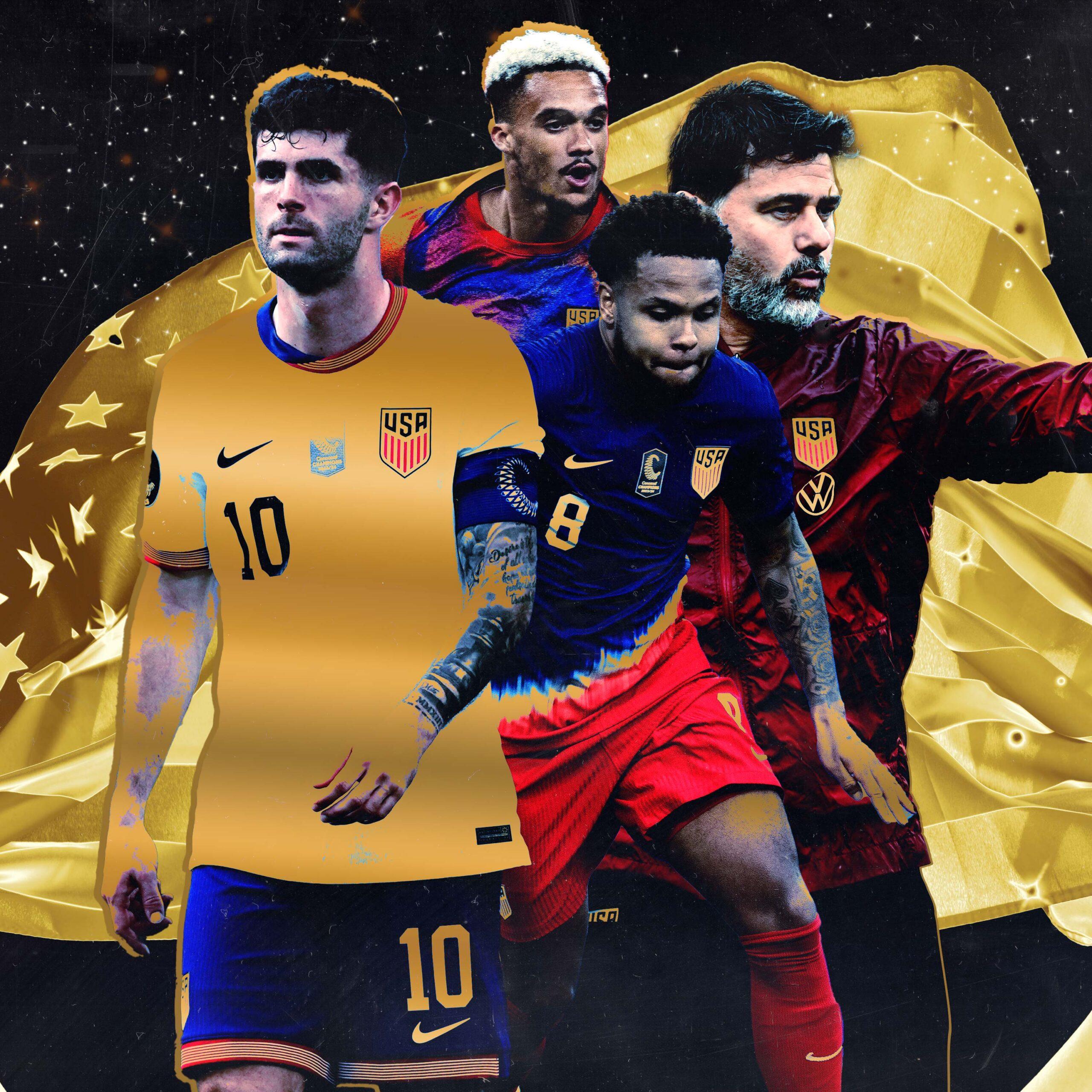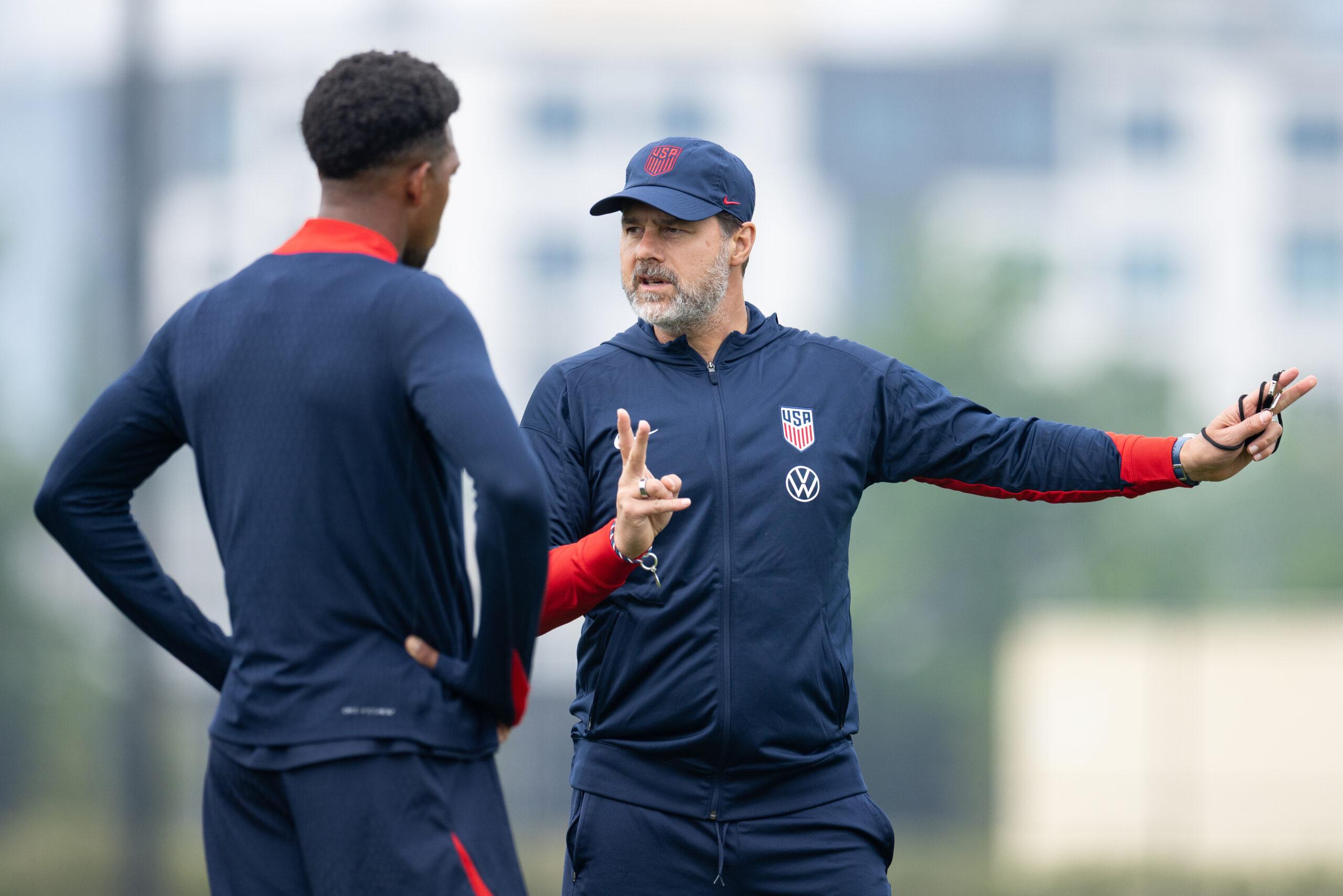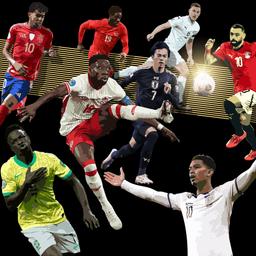
A year and two days before its 2026 FIFA World Cup opener, the United States men’s national team was booed off the field by its own fans in a half-empty stadium in Nashville.
In a tune-up game for the 2025 CONCACAF Gold Cup, which kicks off for the U.S. against Trinidad and Tobago on Sunday, the American dismantling at the hands of Switzerland was so comprehensive that the home team gave up more first-half goals (four) than it had in 40 years. Only Swiss disinterest in running the score up further in the second half seemed to spare the Americans—who registered zero shots on goal—from further humiliation than the 4-0 defeat.
It was the fourth straight loss by the USMNT, its longest such streak since 2007, and a new nadir on the potholed road to the second World Cup to be played (mostly) on U.S. soil.
Two weeks earlier, Mauricio Pochettino, U.S. Soccer’s high-profile head coach hire last fall, had sounded the alarm when he announced his initial roster for the monthlong Gold Cup preparation camp. Near the end of a session with the American soccer press assembled on Zoom, Pochettino, unprompted, threw a verbal haymaker at his team’s culture.
“What we want to create in our national team is people desperate to come but desperate to come to perform,” he said. “We only have time to train one, two, three times, play [a game]. One, two recoveries [sessions], and play. And then go home and maybe wait two months to be all together [again]. If you want to arrive to the camp, and you want to spend a nice time, play golf, go for a dinner, visit my family, visit my friends—and that is the culture we want to create? No, no, no, no, no. What we want to do is be focused and spend all my focus and energy on the national team. We need to create this culture about winning and to chase our aim. If we want to be good in one year’s time [at the 2026 World Cup], we need to think that today is the most important day.”
On Sunday, Pochettino repeated this edict in Spanish and added a flourish. “I want 11 lions or wolves—or whatever animal you like best and is the most aggressive—on the field,” he said. “That they fight as if lives are on the line.”
The USMNT’s last camp back in March, ahead of the finals of the CONCACAF Nations League, another regional trophy, had been a debacle. The Americans had won all three of the maiden editions of that tournament beginning in 2019 but lost to Panama in the semifinal and Canada in the third-place match this time around. They were both narrow losses, but the USMNT looked disheveled, no longer an effervescently gifted young team on the rise but rather a loose collection of unfamiliar players, adrift and disinterested.
“For us, we learned a lot in the last few camps, for sure in March,” said Pochettino. “And I think it’s about to be [a] different approach.”
He wasn’t alone in voicing his concern. “When we come back, some things need to change and we need to improve,” captain Christian Pulisic had said in March. “Obviously, the feeling is not good right now. We need to turn it around and we can hopefully build some momentum this summer, because we really do need it.”
Whatever momentum and credibility a young and inexperienced team had assembled in a sound performance at the 2022 World Cup, reaching the round of 16, had been squandered. Plainly, ditching Gregg Berhalter after last summer’s disappointing Copa América, ending his underwhelming second spell in charge, did little to lift the cloud over this team, or help it bust out of its slump. Nor had the switch to the most high-profile coach the USMNT has ever employed fixed any of the team’s issues—at least not yet. The attacking shortcomings, the glaring lack of feistiness, the habit of playing down to weaker teams, they had all survived the coaching change—making the uncomfortable suggestion that perhaps the ousted head coach, who was popular with the players but not exactly with the fans, wasn’t the problem. Worse still, the vibes on a team that once prided itself on its closeness were now very obviously rancid.
“It’s like a crossroads that we have now,” said defender Chris Richards. “After March, we really kind of had to look inside of ourselves and figure out what was the problem.”
“I don’t think there’s any denying that some of our performances have fallen short over the past year to 18 months,” echoed fellow defender Walker Zimmerman. “It’s something that, us as players, we obviously aren’t satisfied with, and it’s a big focal point for this camp.”
Meanwhile, time marches inexorably on toward the 2026 World Cup, kicking off exactly a year from today, which will mostly be played on home soil. As several recent classes of American talent—unprecedented in their upside and pedigree—pushed into the first teams of some of Europe’s most laureled clubs, they were inevitably affixed with the “golden generation” label. By 2026, it was projected, they would hit their primes and coalesce, all of it culminating in some kind of signature achievement. Because the thing about a golden moniker is that it implies winning something. Or at least doing something.
This expectation is hardly lost on this team. “Whenever you have an opportunity to play in a home World Cup, you want to put on a show, you want to put on your best performance,” said midfielder and occasional captain Tyler Adams. “It’s growing in stature and growing in confidence of the young team that we have, understanding the responsibility that we have and what it’s going to take. I think everyone is going to be prepared for that moment. There’s not a ton of games left, obviously, before the World Cup.”
There aren’t. After this Gold Cup, just four separate nine-day international windows remain before the USMNT has to be ready for the real thing. That’s 36 days in total, most of which will, as Pochettino pointed out, be lost to jet lag and match prep and recovery.
Yet instead of ironing out the last kinks and buffing the final blemishes on his team, Pochettino has had to hit a kind of hard reset. Now in his fifth camp in charge, he has called in no fewer than 59 different players. This turnover has partly been foisted on him by the absence of 10 regulars this summer—for reasons ranging from obligations in the Club World Cup, to injuries, and, in the case of Pulisic, a need for rest—but it also gives the head coach a chance not only to try out fringe players and find depth pieces, but also to rewire the team’s mindset.
“Things happen in soccer,” said goalkeeper Matt Turner. “And I think what we need to control is what we bring to the table every single day: the intensity, the way we push each other, the passion, the energy, the connection with the fans, with each other, with the staff. We’re going to be together for a long period of time and it’s a really good opportunity for us to put a lot of things together, tactically, technically, emotionally.”
Pochettino, for his part, reported being pleased with the early mindset he had observed in the first week of camp. “This attitude I want to continue for the future until we are right to the World Cup,” he said. “That is the only way that we can improve. If I decide in September a different roster, what I want is the same level of commitment, attitude—not to complain about this and that, not excuses.”

The current, uncomplaining roster, missing all those regulars, faced a pair of strong but hardly unbeatable European(ish) teams in Türkiye and Switzerland in preparation for the Gold Cup. Certainly, the opposition in the run-up to the tournament would be stronger than it was likely to be in any game during the tournament itself, complicating the judgment of the performances. Still, the judgment, over the span of the two games, would be damning.
Against the Turks, the U.S. looked much more spirited than it had in March and scored a goal in the very first minute through a Jack McGlynn curler from outside the box. But a pair of defensive miscues in their own box midway through the first half consigned the Americans to a 2-1 loss, despite a series of second-half scoring chances on a soggy afternoon in East Hartford, Connecticut.
Even in defeat, it was enough to spark some optimism. “The team showed great energy, great mentality, great attitude,” Pochettino said after the match with Türkiye. “That is why I think I am so, so happy about the way that we delivered a show, in a way that we tried to play so positive. For sure, playing in this way, we are going to win most of the games. Today, OK, bad luck.”
But just three days later, whatever psychological building blocks had been put in place quickly disintegrated. Pochettino made a raft of changes, further diluting a team already missing so much of its first-choice talent, and Switzerland’s dominance over a disjointed and utterly unthreatening American team was total. Radical optimism would be no salve this time around.
“At halftime, we tried to change the system and to provide more calmness to the team,” Pochettino said after the game. “I think in the second half, the team matched Switzerland in all the areas, and that is the positive thing that we need to take from today.”
Pochettino’s continued positivity following a pair of sound defeats says something about a bar that has been lowered far beyond what anyone might have imagined after Qatar. Presently, the team looks and sounds like one that’s in rebuilding mode, taking satisfaction from flashes of promise, from spring’s first green shoots. But actually, it’s a team barreling toward a seminal event that might very well bend the arc of the sport in the country. If that sounds hyperbolic, the team’s slogan for the second World Cup cycle under Berhalter was no less than to “change soccer in America forever.”
But after three years of never-before-seen highs from a team that really does have more technical talent than any previous incarnation, interspersed by are-we-really-still-doing-this lows, there is little choice but to peer at the near future through rose-tinted glasses. Because the pessimist’s vantage point is bleak.
“Obviously, you wish that you would win every game in the lead-up to the World Cup and you’re flying with confidence,” said Adams. “But it’s a double-edged sword, so to speak, isn’t it? You could be winning a bunch of games that don’t really matter and get to the World Cup and not really have the performance that you want. Or you can go through a period of adaptation, like we’re going through right now, and struggle a little bit and realize what’s in front of you and realize how valuable playing in a home World Cup is going to be. To be honest, I think we’re right where we’re supposed to be right now. We’ve struggled, we’ve gotten beat down, we’ve been pegged back a stone. Now we need to continue to prove that we are at this level and able to improve. There’s room for improvement to be sure but I’d rather that than be perfect.”
Certainly, there is no imminent prospect of perfection in this iteration of the U.S. men’s national team. But a program that has been counting down to next summer ever since June 13, 2018, when North America was awarded the 2026 World Cup, needs to fashion something out of itself that is at least passable. And very soon.


